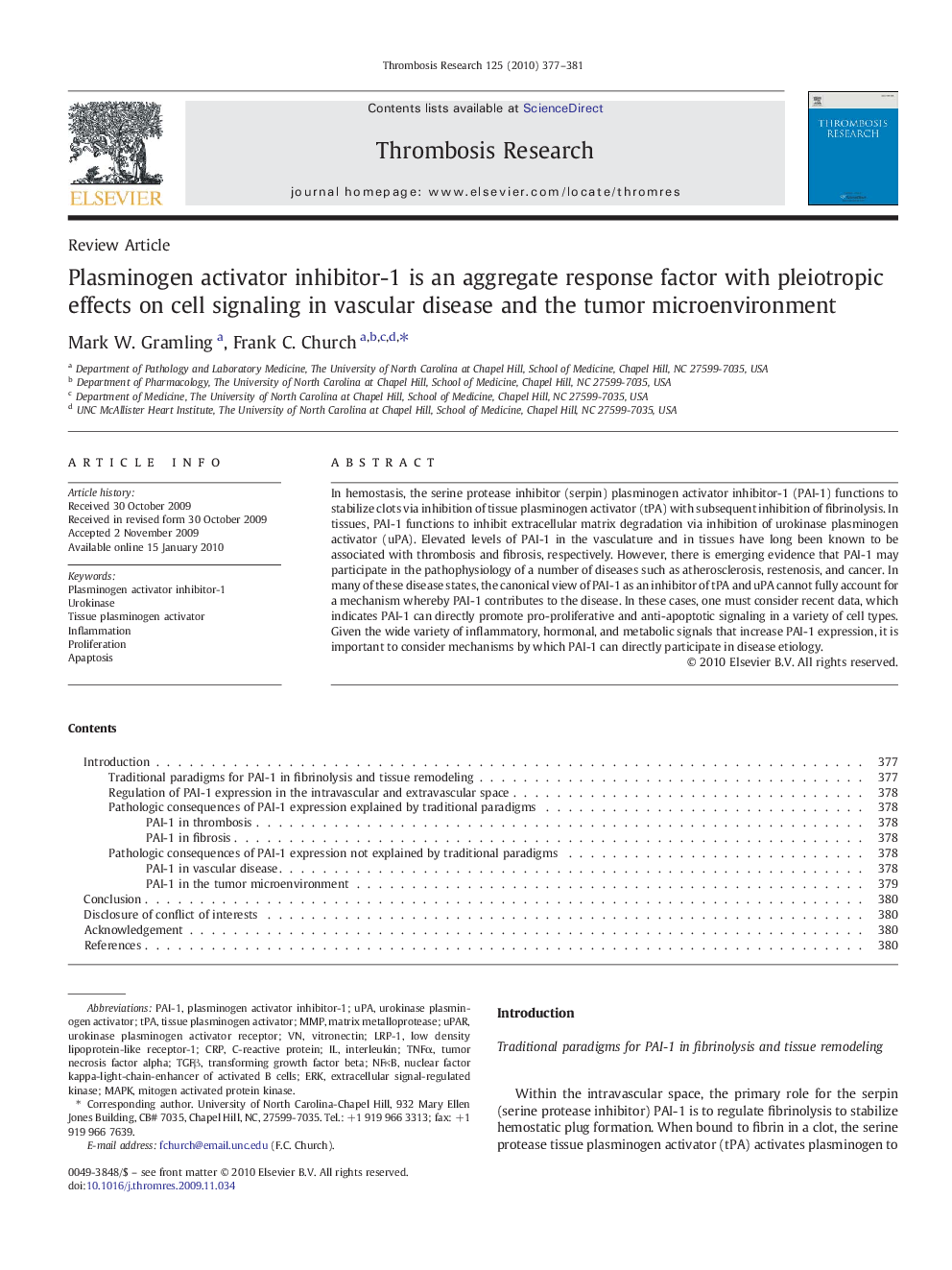| Article ID | Journal | Published Year | Pages | File Type |
|---|---|---|---|---|
| 3027748 | Thrombosis Research | 2010 | 5 Pages |
In hemostasis, the serine protease inhibitor (serpin) plasminogen activator inhibitor-1 (PAI-1) functions to stabilize clots via inhibition of tissue plasminogen activator (tPA) with subsequent inhibition of fibrinolysis. In tissues, PAI-1 functions to inhibit extracellular matrix degradation via inhibition of urokinase plasminogen activator (uPA). Elevated levels of PAI-1 in the vasculature and in tissues have long been known to be associated with thrombosis and fibrosis, respectively. However, there is emerging evidence that PAI-1 may participate in the pathophysiology of a number of diseases such as atherosclerosis, restenosis, and cancer. In many of these disease states, the canonical view of PAI-1 as an inhibitor of tPA and uPA cannot fully account for a mechanism whereby PAI-1 contributes to the disease. In these cases, one must consider recent data, which indicates PAI-1 can directly promote pro-proliferative and anti-apoptotic signaling in a variety of cell types. Given the wide variety of inflammatory, hormonal, and metabolic signals that increase PAI-1 expression, it is important to consider mechanisms by which PAI-1 can directly participate in disease etiology.
